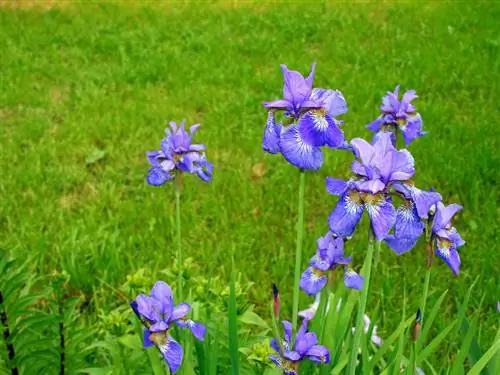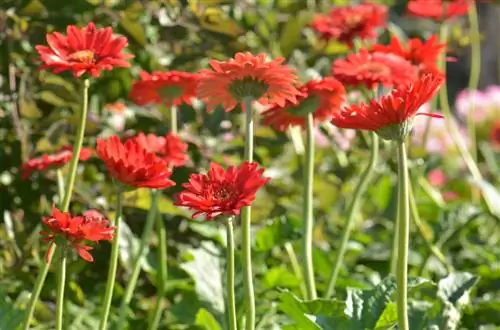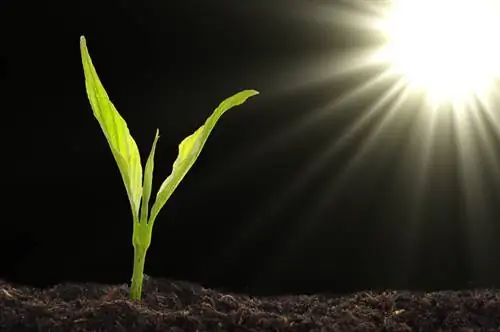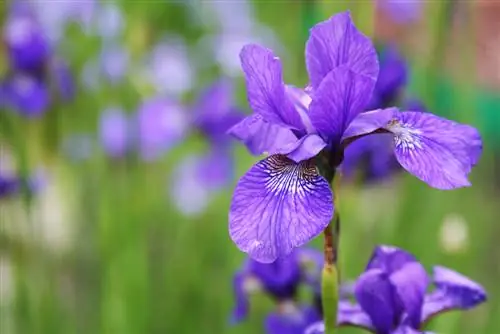- Author admin [email protected].
- Public 2023-12-16 16:46.
- Last modified 2025-01-23 11:20.
It generally doesn't require a lot of effort if you want to plant irises in your garden. These plants are relatively uncomplicated and require very little care in the right location.
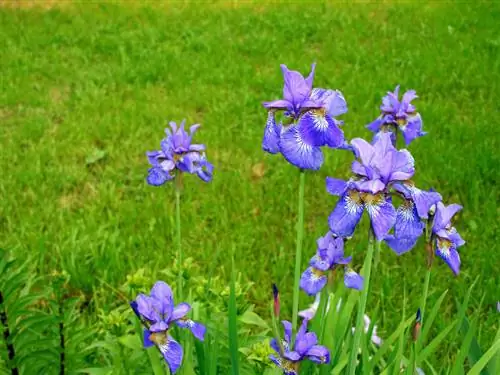
How to properly plant irises in the garden?
To successfully plant irises in the garden, choose a sunny location and pay attention to the moisture requirements of the respective subspecies. Do not plant the rhizomes too deep so that the top remains visible. Propagate irises by division or sowing.
How do the plants of the Iris genus grow?
Irises have tuberous rhizomes underground in which a lot of moisture and energy can be stored. Depending on the subspecies, the leaves are between 30 and 80 centimeters high. Large individual flowers open on the flower stalks in colorful shapes.
Which location do irises prefer?
When choosing a location, you should definitely look for a location that is as sunny as possible. However, the plants in the following subgroups each have different moisture requirements:
- the bearded iris
- the steppe iris
- the swamp iris
While the swamp iris prefers permanently moist soil, specimens of the steppe iris are sensitive to waterlogging in the soil. The bearded iris produces its magnificent flowers even on poor soils, but is relatively flexible when it comes to soil moisture.
How deep do irises have to be planted?
You should pay attention to the correct planting depth of the iris rhizomes, especially when planting new plants and dividing them for propagation purposes. Do not insert them too deeply into the soil, otherwise the leaf bases and flower stalks may rot. The correct planting depth is when the upper end of the rhizomes is still visible slightly above the soil.
Is it worth growing irises from seeds or are there other propagation methods?
Growing irises from seeds is generally possible and sometimes necessary for exotic and rare varieties. However, if you already have fully grown specimens in the garden, propagation by division is the less maintenance-intensive and quicker way. Remove the flowers during flowering if you do not want to self-sow the seeds.
When is the flowering time of the iris?
The exact flowering time for irises depends not only on the respective location, but also strongly on the respective subspecies. While some irises develop their flowers as early as April, others only bloom from June to July.
Tips & Tricks
Many iris species can overwinter outdoors without special protective cover. Covering with mulch can even be counterproductive because it can promote the development of rot on the plants due to constant moisture.

